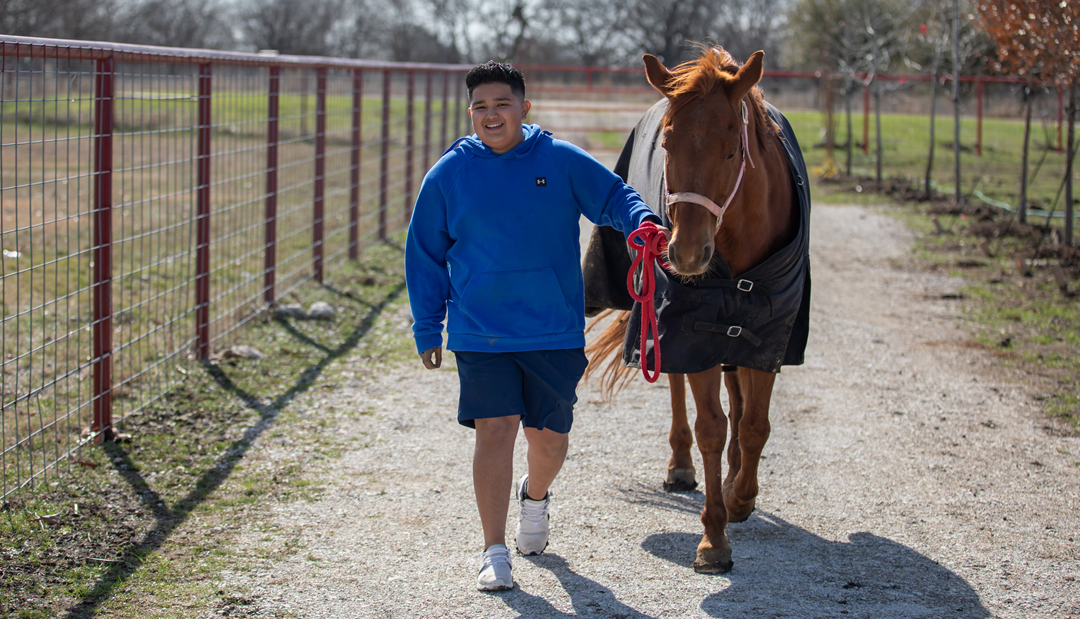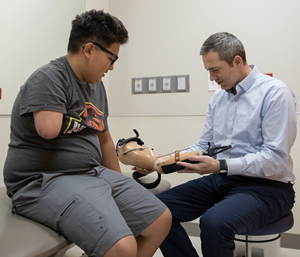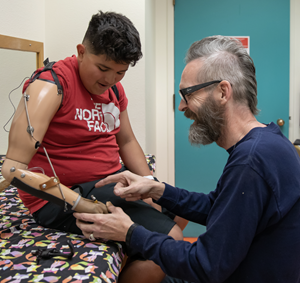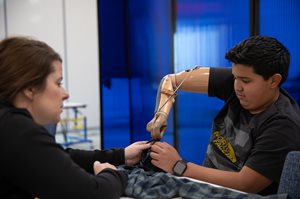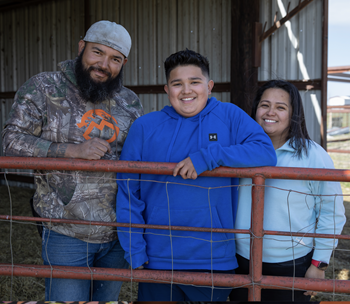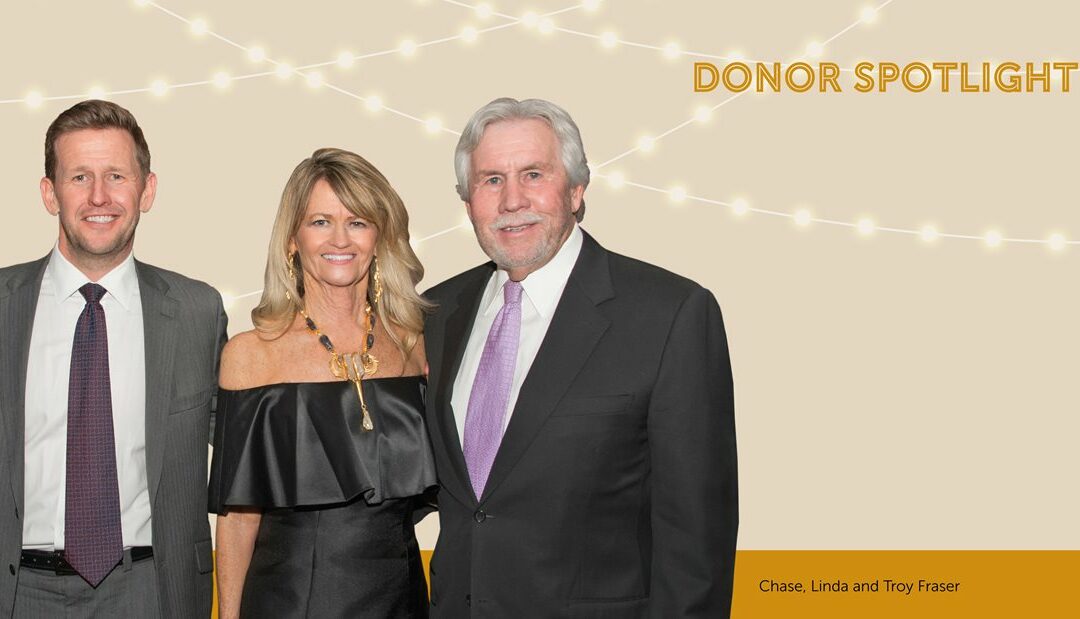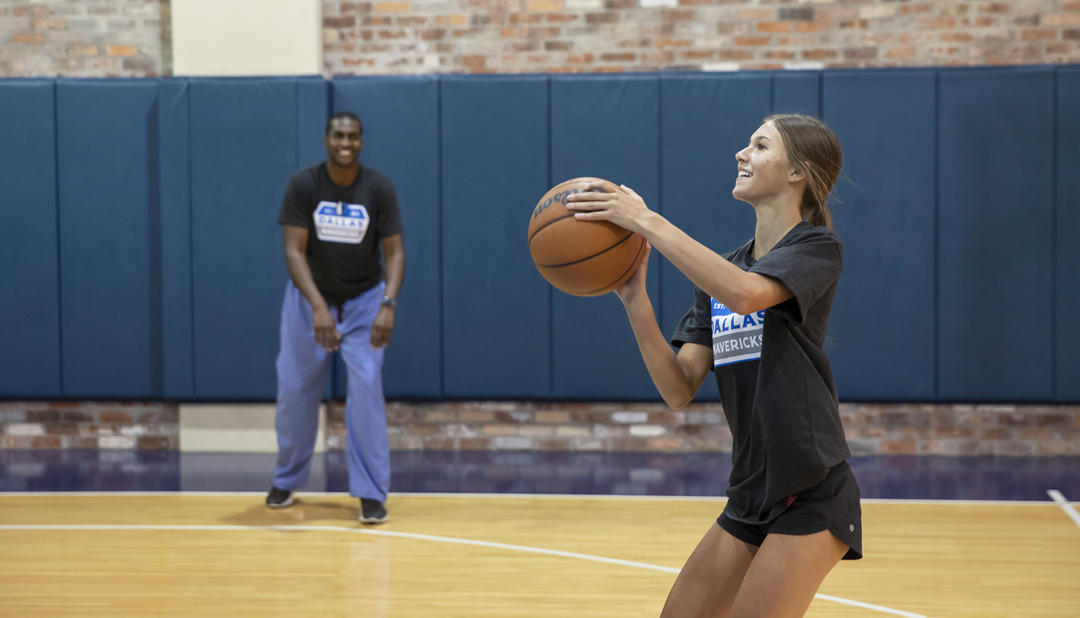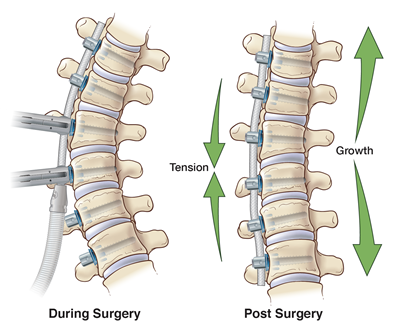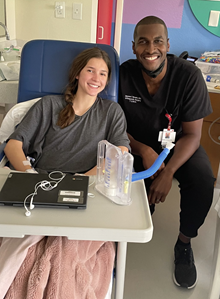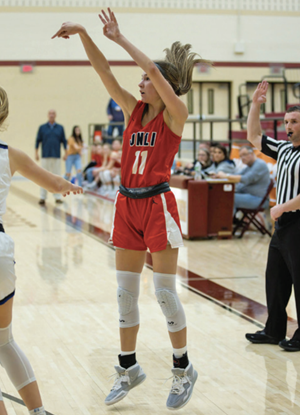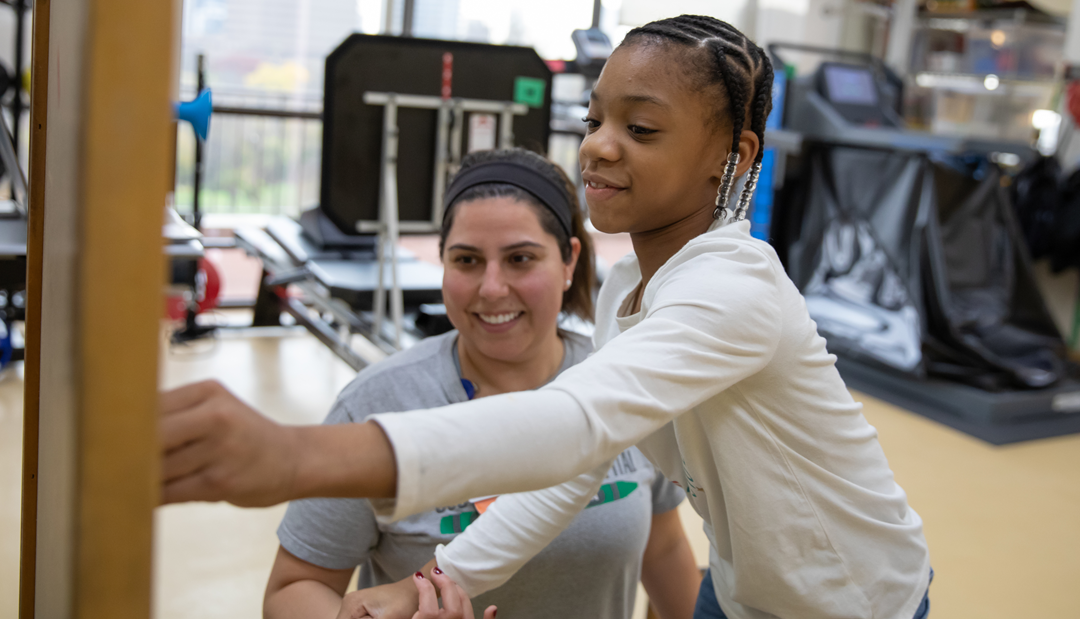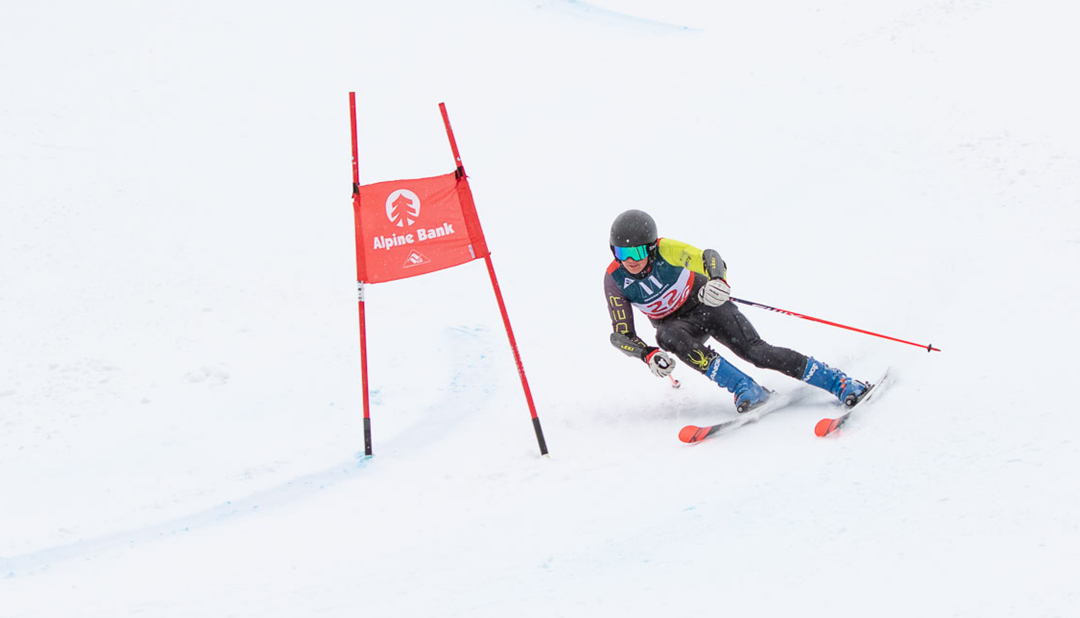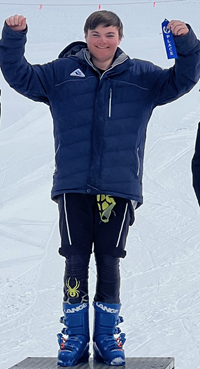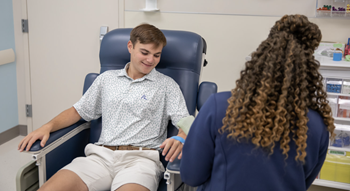Cover story previously published in Rite Up, 2023 – Issue 1.
by Kristi Shewmaker
Gracee never imagined that one day she would play basketball in the Dallas Mavericks® practice gym, much less play one-on-one against her 6’5” pediatric orthopedic surgeon. As a 15-year-old high school varsity basketball player of Tuscola, she also never imagined that three months before that, she would be the first patient at Scottish Rite for Children to receive The Tether™ Vertebral Body Tethering System, a surgically implanted spinal device that is used to treat scoliosis.
Gracee grew up with basketball. “As a little girl, she went to the gym a lot because we were in the gym a lot,” says Carla, her mother. Gracee’s father, Hunter, is the high school varsity girls basketball coach. Gracee watched him coach her older sister before playing herself.
Gracee started playing competitive basketball in second grade. “We sent letters home to the girls in her class saying that we were going to meet one day a week to skill and drill,” Hunter says, “and it grew from there.” Throughout the years, Hunter coached Gracee and her team in various leagues. In middle school, Gracee joined her school team. In high school, Gracee started on the varsity team with some of the same girls that she has played with since second grade. “What I love most about basketball is the friendships that come with it,” Gracee says.
The summer before her freshman year, Gracee was seeing a chiropractor for an issue with her hip flexor, and Hunter mentioned that she had scoliosis during the appointment. A school nurse had noticed it during a routine screening when Gracee was in elementary school. Her curve was less than 10°, so her pediatrician had been monitoring it. “When she laid down on the chiropractor’s table, and I saw her back,” Hunter says, “I was like, ‘Oh my gosh!’ We didn’t realize to what degree the curve had gotten.”
Hunter contacted Scottish Rite for Children for help, and there, Gracee was diagnosed with adolescent idiopathic scoliosis. This condition occurs in patients ages 10 to 18, and the cause is unknown. Her curve measured 42°. “I was shocked,” Gracee says. “I didn’t think it would be that bad.”
Initially, Gracee wore a brace to prevent further progression and to try to avoid surgery. However, within months, her curve progressed to more than 50°, which experts call the surgical threshold — the point when surgery is recommended to stop a curve from getting larger. “In a certain subset of kids wearing their braces, the curve still progresses,” says Jaysson T. Brooks, M.D., pediatric orthopedic surgeon. “They have so much growth potential left, their spine overpowers the brace.”
When Gracee and her family first met Dr. Brooks, they began discussing treatment options in anticipation of the need for surgery. Dr. Brooks presented two surgical options, including spinal fusion, which he calls “the gold standard treatment,” and The Tether™, a new non-fusion surgical device he had used previously to treat scoliosis but had not been used at Scottish Rite.
